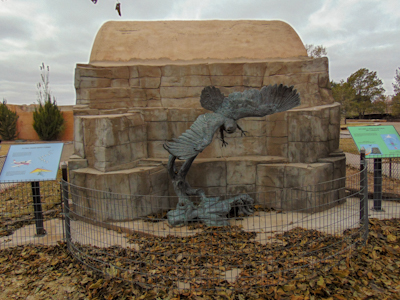
Overall Rating

The Spring River Park Zoo is located in Roswell, NM. The Zoo sits inside a 34 acre public park called Spring River Park. The Zoo is home to a variety of local species with some exotic species as well.
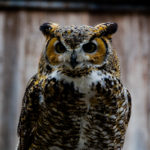
Website: https://www.roswell-nm.gov/279/Spring-River-Park-Zoo
Hours:
(Wednesday – Monday)
October 1st to March 31st
9:00am-5:00pm
April 1st to September 30th
9:00am-6:00pm
Closed:
Tuesdays
Christmas Day
Ticket Pricing:
All ages: Free
Parking: Free
Pet Daycare: N/A
Service Dogs-N/A
With any extra service provided I would always call ahead for any information.
Customer Service:
Restaurants:
A concession stand is available seasonally.
Animal Habitats

Education

Cultural Immersion

Navigation

Food Variety

For more information about our ratings check out the Ratings Page.
Our Zoo Experience
We stopped at the Spring River Zoo on the road between Amarillo TX and Alamagordo NM. This small, free Zoo is a wonderful place to get out and stretch your legs! As we left the parking lot, we came to a few possible directions to go. To the left was a path leading us to native species. To the right was the Zoo’s small collection of exotic species. Straight ahead was the Zoo office.
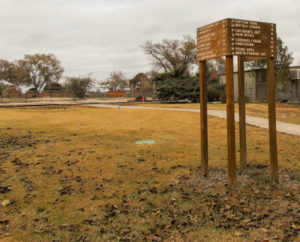
Of course, we went to the left. This led us to the Bald Eagles, Bears, Cougars, and other native Carnivores.
The Bald Eagle habitat has a wonderful statue and educational signage next to the exhibit. There were two Bald Eagles in the enclosure, and one was talkative. Did you know they chatter, and they do not sound at all like Hollywood portrays them?
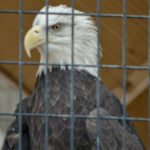
We moved down the path from the Eagles to the Bears and Cougars. The Black Bears were enjoying some nice hunks of watermelon. So, they did not pay too much attention to us.

Next to the Bears was the Cougar habitat, and they were not very interested in us either. They were distracted by a small bird that was flying in and out of the opening at the top of their enclosure. They were not investing too much energy in chasing the bird though.
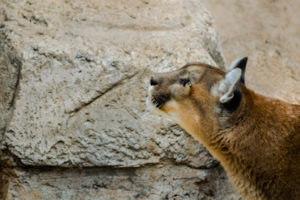
The Cougars looked to be a very healthy weight and were mostly chasing the bird for fun. After a while, they got bored with the bird and laid down. Both Cougars perched on their wood platforms and stared at us while flicking their tail. They acted just like larger, less evil versions of our own cat.
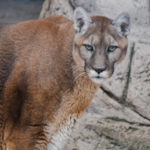
Both the Bears and Cougars had large enclosures mostly made of concrete in the shape of natural rock and mountain side terrain. We have learned that the City of Roswell has plans to make major improvements to their Zoo, and upgrading these enclosures is one of their priorities. We are excited to see this Zoo again with these improvements in place.
Up next was a couple of small carnivores native to the Southwest United States, the Bobcat and the Coatimundi (Coati). They both had round enclosures with good viewing, but there were several tubes and dens where they could hide.
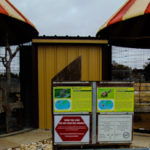
Up next were some open plains exhibits with various hoof stock species. First, we saw some Aoudad, or Barbary Sheep. Originally native to North Africa, this species is well adapted to the climate and terrain of Texas and New Mexico. So, this species has thrived since being introduced in the region after World War II. In the wild, they are invasive and outcompeting the local Mule Deer and Big Horn Sheep.
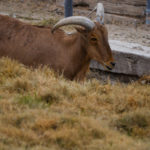
After the Aoudad was a large enclosure for the Wolf. It was a wonderful, large enclosure for the Wolf. We were surprised and excited when it came running up to us from deep in its habitat. It ran right up to the fence by Steve and stared him down!
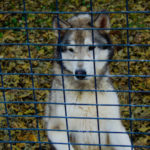
At first the Wolf looked happy to see Steve, but then it started barking! As best we can tell, the Wolf must have thought Steve was his Keeper at first. Maybe it was Steve’s green hoodie, but once the Wolf figured out he didn’t know Steve, it got MAD!
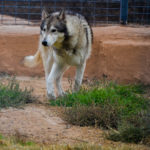
We took a few steps back from the Wolf habitat and moved on. We didn’t want to stress the Wolf out.
Behind us was the Pronghorn habitat. It was laying down on the rocky area of its habitat right next to our walkway.
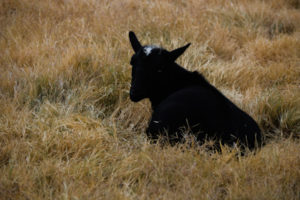
In the middle of the habitat was a Pygmy Goat laying in the grass. This little cutie was out of place amongst the North American wildlife, but since they only had one Pronghorn, we assumed the Goat was hanging out to keep the Pronghorn company.

Up next was an enclosure for Mule Deer. We did not see any Deer out on this day, but it is possible they were off exhibit or hiding in their barn.
As you keep going, you will round a corner and encounter some Alpacas and some Bison. Both species were being pretty lazy on this cold, cloudy fall day.
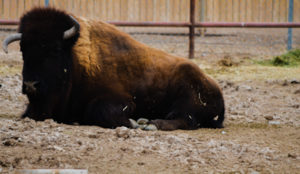
As you continue around the corner and walk next to the large Bison enclosure, don’t miss the Coyote behind you! On this day, the Coyote was up trotting around. He appeared to be patrolling his perimeter.
Up next was an open area with a sign indicating this would be the future site of the Cougar Habitat. As we mentioned before, we look forward to our next visit when they have this area completed.
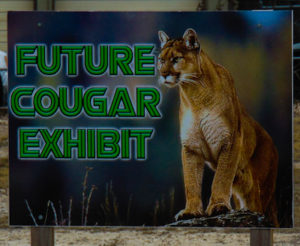
This was the end of the Plains Exhibits, and we moved into the next part of the Zoo.
This Zoo focuses on the species native to the area, but the next exhibit was for a couple of Asian species. There were a couple of Reeve’s Muntjac and Indian Peafowl.
If you are not familiar, the Reeve’s Muntjac are the cutest little species of forest dwelling deer. They are SSOOO tiny! And, they have the neatest little tusks! This pair of Muntjac were hunkered down for the day though. The cool afternoon was proving to be a bit much for both the Muntjac and Peacocks.
Unfortunately they did not want to brave the colder weather, so we were unable to snap a photo. Hey, what a good excuse to visit again! Hint, hint Steven Fowler!
Up next were the Badger and Foxes. The Badger was walking around exploring his habitat, and the foxes were up on perches towards the top of their habitats.
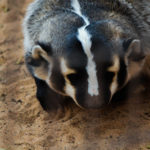
The Zoo had both Grey and Red Foxes, and they were posing for pictures!
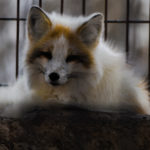
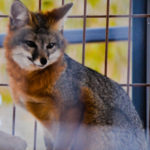
The Zoo also had a Racoon, but we were unable to see him. He must have been burrowed down.
Behind us was a small group of Turkeys. They were strutting around, and enjoying the fact they would not be on anyone’s Thanksgiving tables.
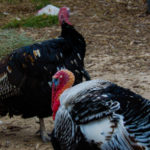
At this point, you follow the sidewalk around a couple of turns, and you will pass the Zoo Main Office. Follow the path on around and you will find some other animal habitats.
You will find and adorable group of Pygmy Goats. These guys were much more interested in their hay than visitors.
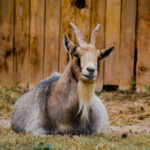
Up next is one of the few African inhabitants of the Spring River Zoo, the Ring-tailed Lemur. All species of Lemur are native to the island nation of Madagascar. Like most Lemur species, the Ringtail is critically endangered, and the conservation efforts of Zoos around the world may be our only chance of preserving this, and many other, species. We really do mean it when we ask that you support your local Zoo!
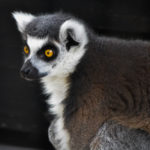
Behind us was a set of Raptor, or Birds of Prey, enclosures. There was a Turkey Vulture, a Great Horned Owl, and a Red-tailed Hawk.
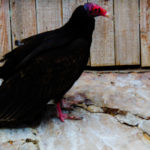
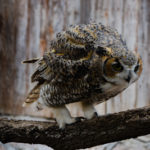
All three of these beauties were showing off for the camera, and both Steve and I were able to get some of the best pictures we have of these species!
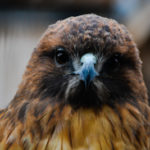
The last enclosure we came to were (some kind of cute sheep/goat). Like the Pygmy Goats earlier, these cuties were happy to munch on some hay, and they were not really interested in us at all.
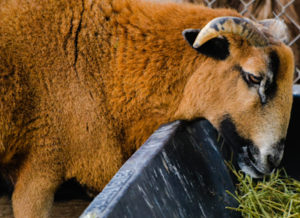
Most of the Zoo animals were on this main loop, but before you head back to the parking lot, there is a small Reptile building. We visited in November, so most of the animals had been moved inside and were off exhibit. This is typical for any size Zoo with temperature sensitive animals, and we did not mind it at all.
From there, you can walk down to another area of the Zoo. Here you will find the Concession Stand, a train to take you around the Zoo and park, and petting Zoo with some Miniature Donkeys and Longhorn Cattle.
We did not stay too long at this point as we still had a few hours’ drive to Alamogordo, but we look forward to the next time we visit the Spring River Zoo. We cannot wait to see how this wonderful little zoo continues to evolve and grow!